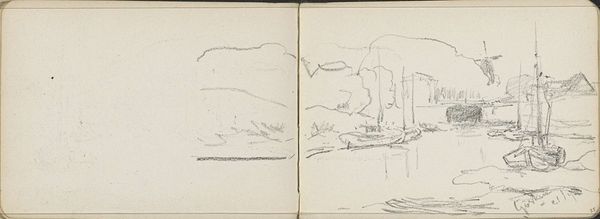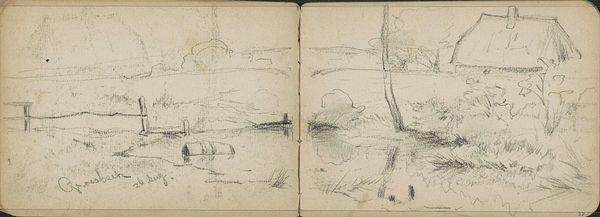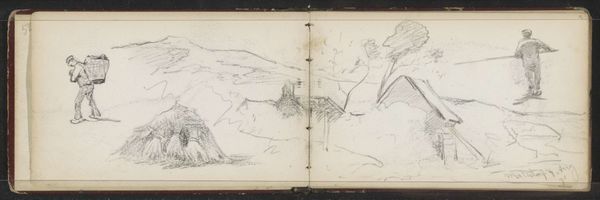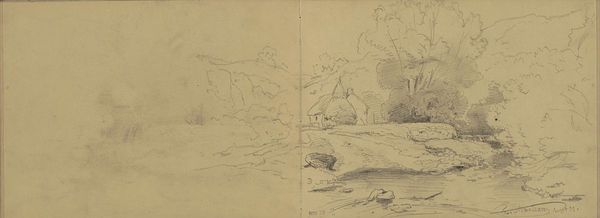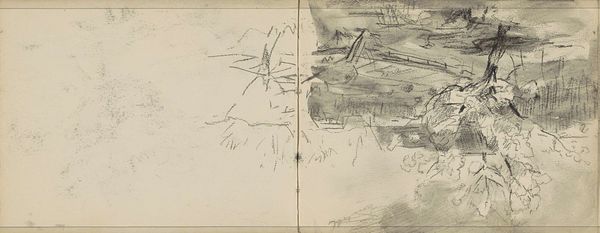
Dimensions: height 104 mm, width 179 mm
Copyright: Rijks Museum: Open Domain
Willem Cornelis Rip made this pencil drawing, titled 'Gezichten op Kortenhoef', sometime in the late 19th or early 20th century, capturing scenes from the Dutch village of Kortenhoef. This artwork offers a glimpse into the cultural valorization of rural life, particularly among artists of the time. We can see a trend towards landscape art, reflecting a growing interest in the natural world, and perhaps even a nostalgic yearning for simpler, pre-industrial ways of life. Rip's choice to sketch Kortenhoef connects to the popularity of depicting picturesque villages, which became a common theme in Dutch art as urbanization increased. The sketches invite us to consider how Dutch artists were responding to social changes. To understand this work fully, we might look to period writings on art and nature, local histories of Kortenhoef, and broader studies of Dutch cultural identity in this period. This will reveal the complex relationship between art, society, and the construction of national heritage.
Comments
No comments
Be the first to comment and join the conversation on the ultimate creative platform.




